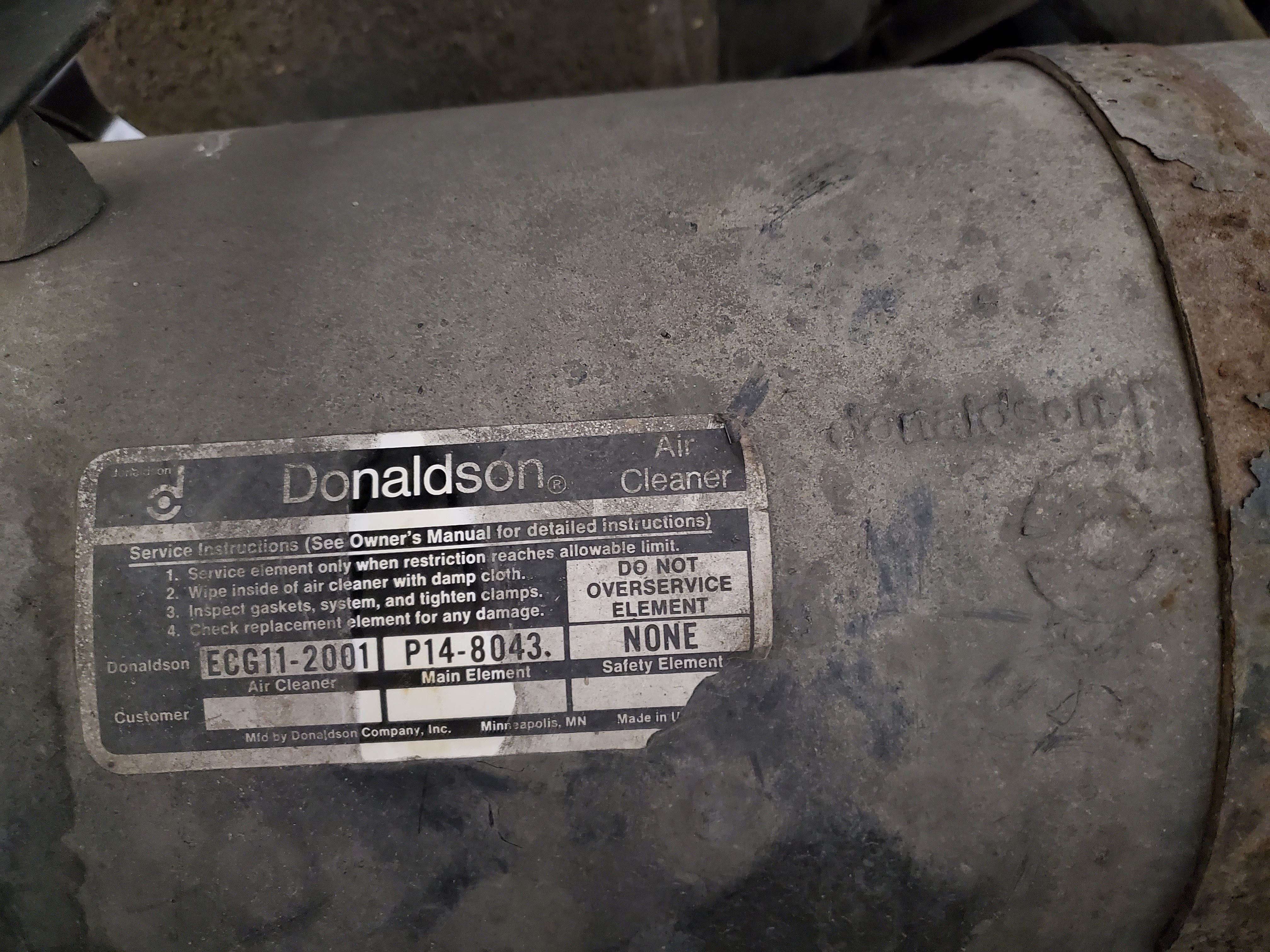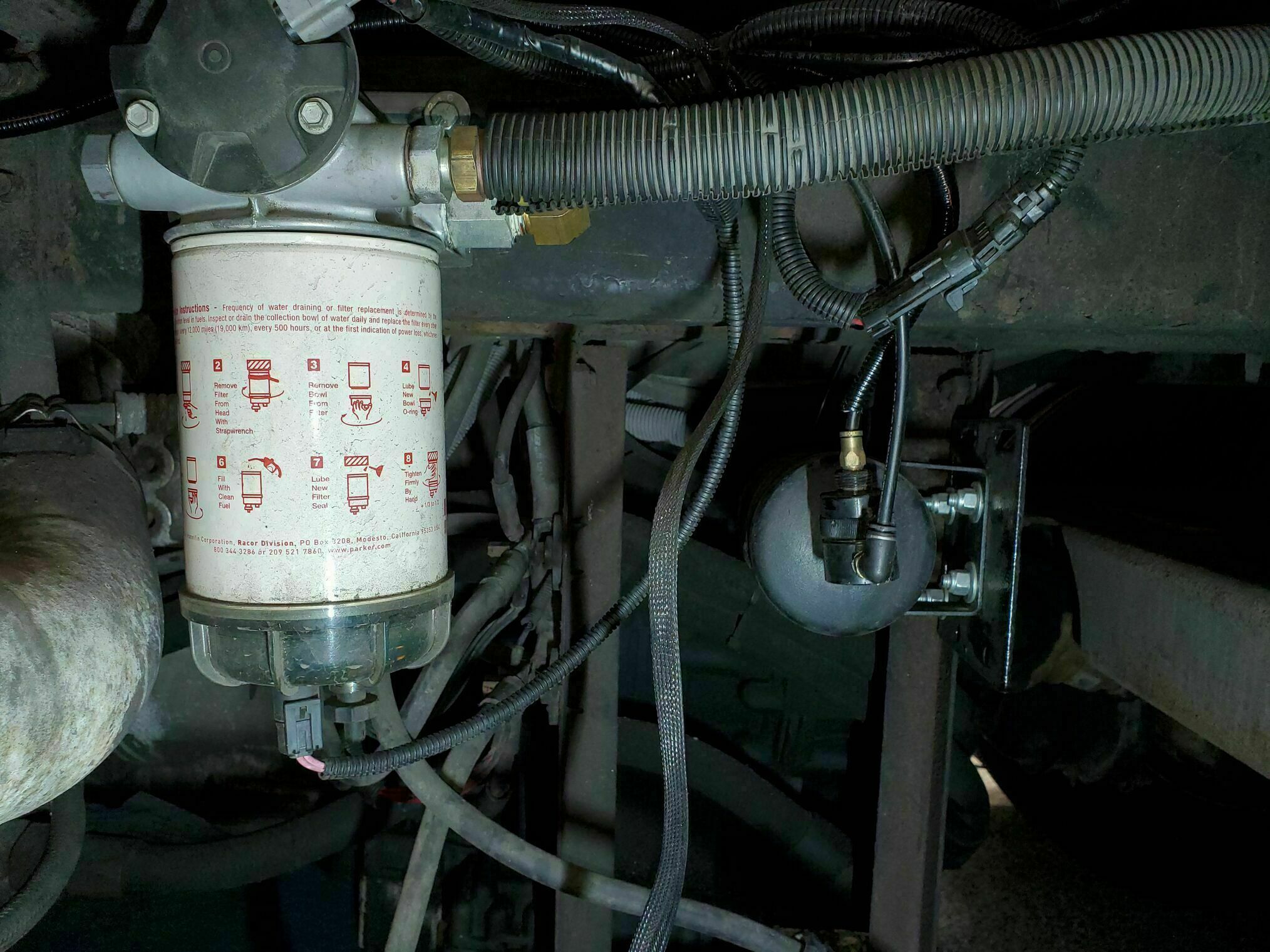Replacing the condenser fan

Our air conditioner’s condenser fan had been replaced once before, but was no longer operating efficiently. According to the previous owner, the auto-resettable (Type II) fuse would occasionally trip when the A/C was running. When replaced, the wiring was redone to isolate the fan load and the circuit breaker remained a 15-amp unit.
Choosing a Replacement
When searching for a replacement there are a few items to consider.
1. CFM & Static Pressure
The first is airflow, measured in CFM (Cubic Feet per Minute). It’s important to select a fan that meets or exceeds the OEM fan’s CFM vs. static pressure performance. More airflow generally translates to better cooling, especially when the vehicle is stationary or moving slowly. You can’t really have “too much” airflow for this application. Note that finding published performance data can be challenging and you may only find CFM and AMP draw.
2. Current Rating & Electrical Load
The fan’s current draw must be compatible with your wiring and breaker capacity. If necessary, you can upgrade both the wiring and breaker — but keep in mind the total current available may be limited by your distribution panel.
3. Pusher vs. Puller
It’s essential to match the airflow direction to your setup. Our fan is mounted on the back side of the condenser coils and is configured as a puller — it draws air from outside and exhausts it into the engine compartment.
4. Noise
Although generally less critical in an rear engine setup, fan noise is still worth noting. In our case, the fan is located at the rear of the coach, so it’s unlikely to be noticeable from the cabin.
Possible replacements

Our A/C system was manufactured by SGM, who is still in business and can supply replacement parts, though at full retail prices. The part number they provided for our system was 1060-029, which appears to be a proprietary SGM number, even though the installed fan was a DCM unit.
When we contacted FoT, the part number they offered was DCM 840029-NS-1. This exact number doesn’t appear in DCM’s public catalog, but similar models appear to be:
- DCM 840025 which uses a 11-amp/160-watt motor and looks comparable — though slightly thinner than our original fan. Not IP68 rated / puller type / straight blade / max CFM 1565
- DCM 840025HP, which uses a 13-amp/225-watt motor, is slightly thicker (by about 1/8”). Not IP68 rated / puller type / straight blade / max CFM 1733
Some owners have reported success installing Spal fans as alternatives. Notably:
- Spal 30102049 (high-performance curved blade puller): 2024 CFM, 20.2–21.8 amps.
- Spal 30102120 (high-performance straight blade puller): 1918 CFM, 17.5–19.5 amps.
Our choice
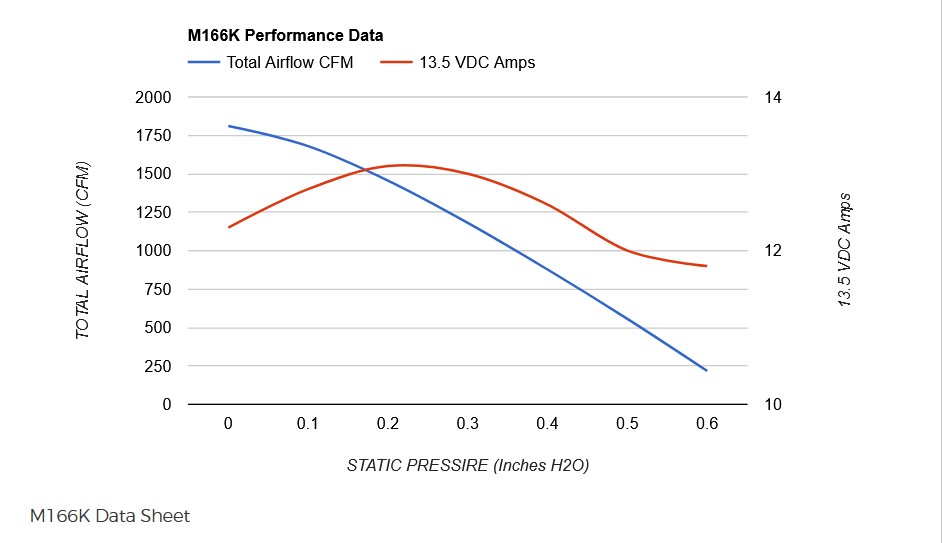
Ultimately, we chose a Maradyne HP M166K, which cost less than half of what SGM wanted for the OEM replacement. Maradyne High Performance fans are part of DCM Manufacturing. While performance curves should be taken with some skepticism, the published CFM vs. static pressure curve for the Maradyne — featuring a 160-watt IP68-rated motor — was slightly better than either the DCM 160W and 225W models. The mounting bolt pattern matched the OEM fan (though we were prepared to adapt if necessary). IP68 rated / puller type / S blade / max CFM 1810
Fan Installation
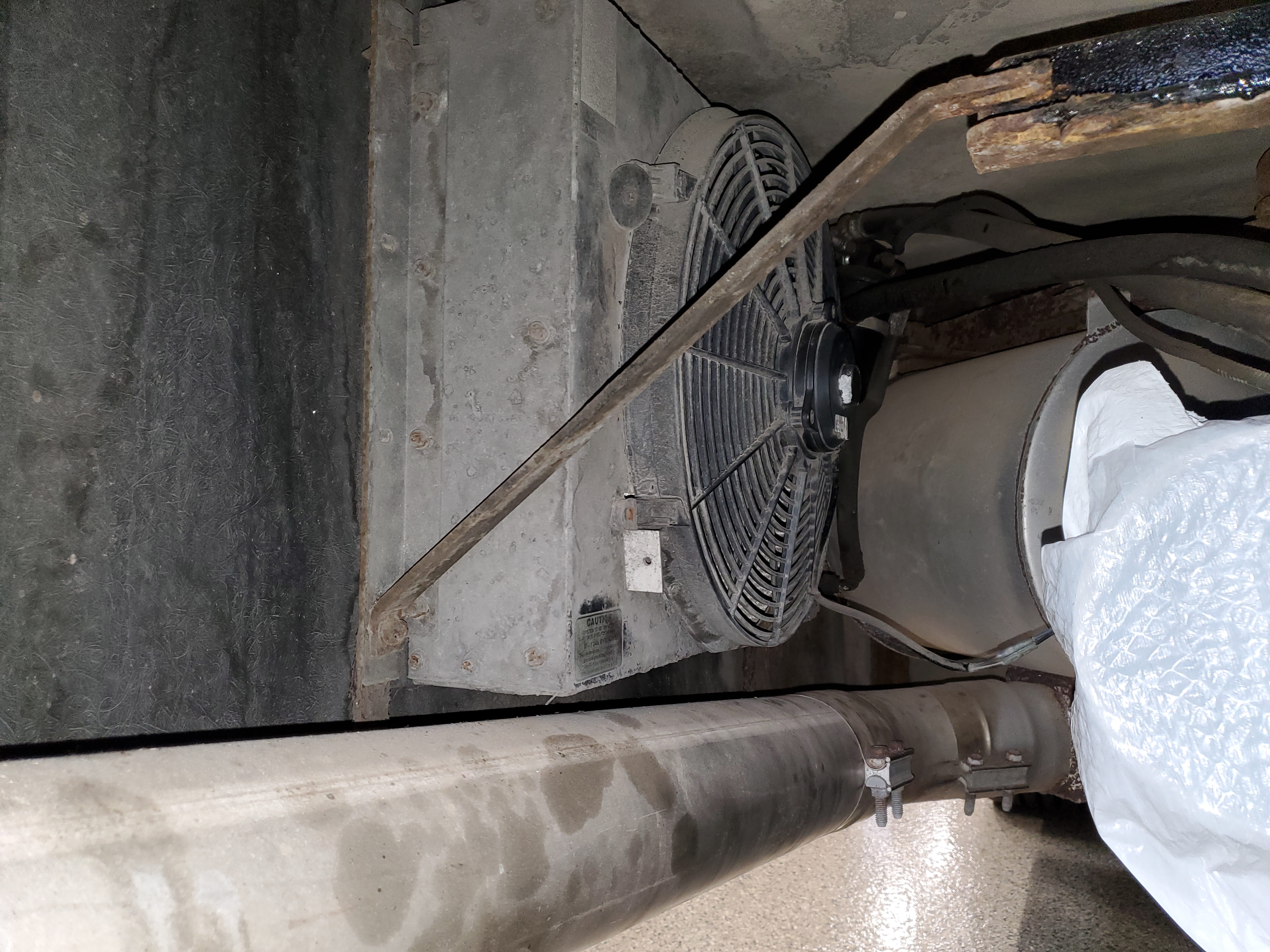
As mentioned, we installed the Maradyne HP M166K. We upgraded the breaker from 15 to 20 amps. The existing fan wiring in our coach was already 10 AWG, which is actually larger than the leads on the fan itself, so no rewiring was necessary. The new fan’s performance curve suggests improved airflow over the OEM unit, largely thanks to the more robust motor.
When FoT previously replaced the fan, the condition of the mounts suggested they had encountered several issues, including snapped screw heads, broken fan feet, and an improvised mounting solution using fender washers and an L-bracket. One mounting point was even left completely unused. Notably, the SGM 1060-029 replacement fan does not come with new feet—they must be purchased separately.
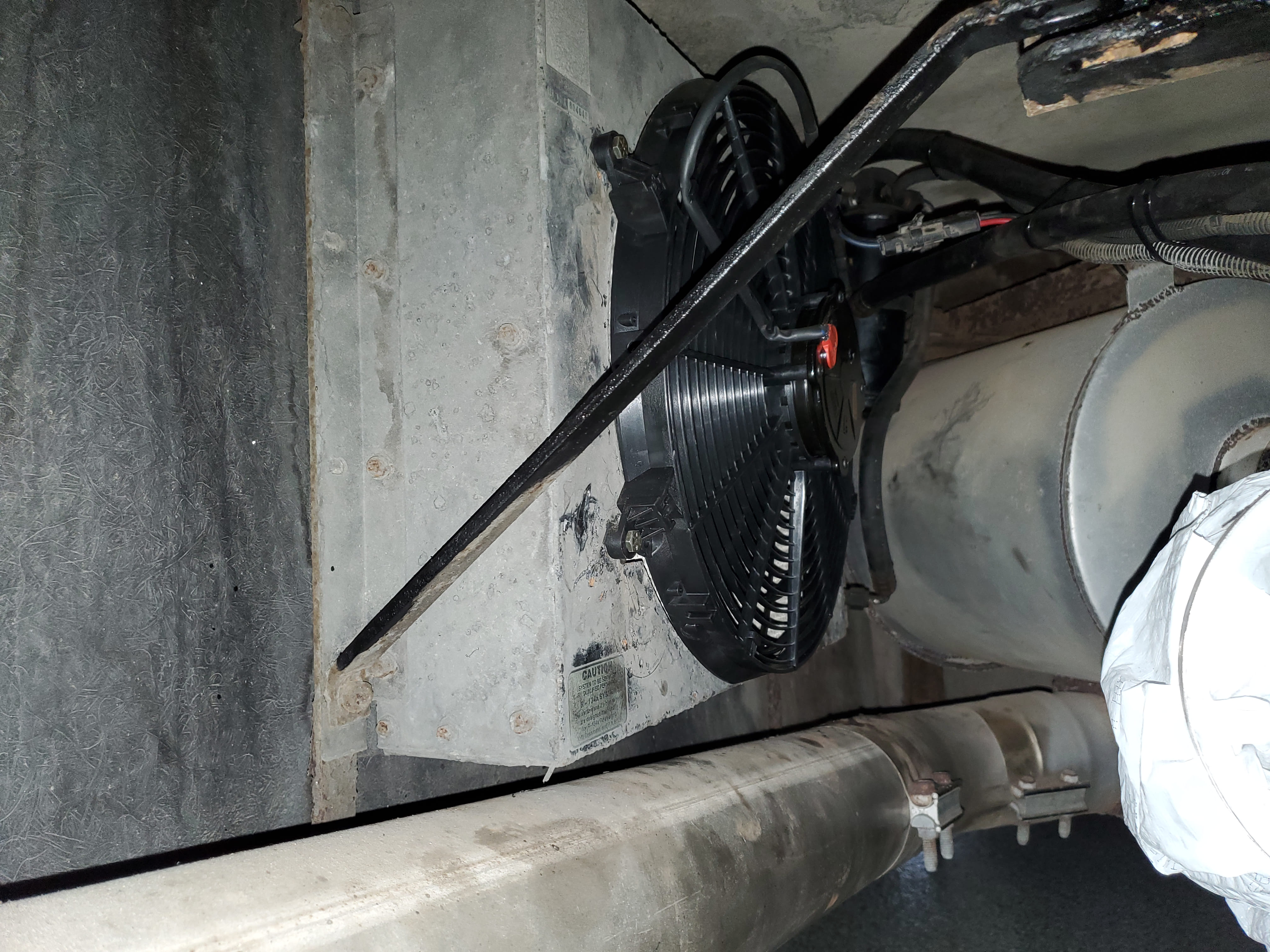
Since I wasn’t on the clock, I took the time to remove all the broken feet and fasteners, pried off the speed nuts, and installed new hardware. The Maradyne fan (which comes with mounting feet, as most replacements do) lined up perfectly with the original mounting holes, and fit just like the stock unit.


